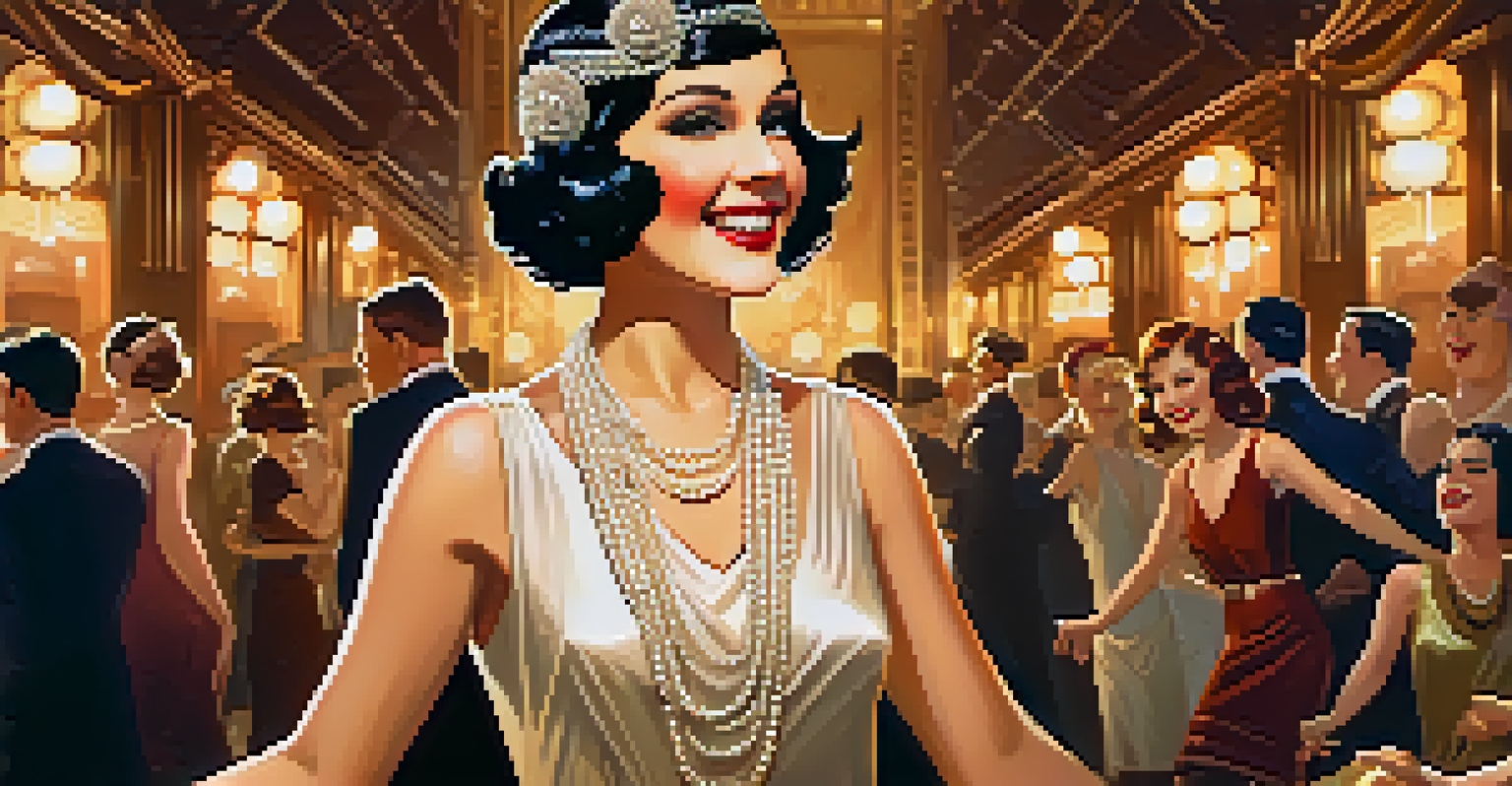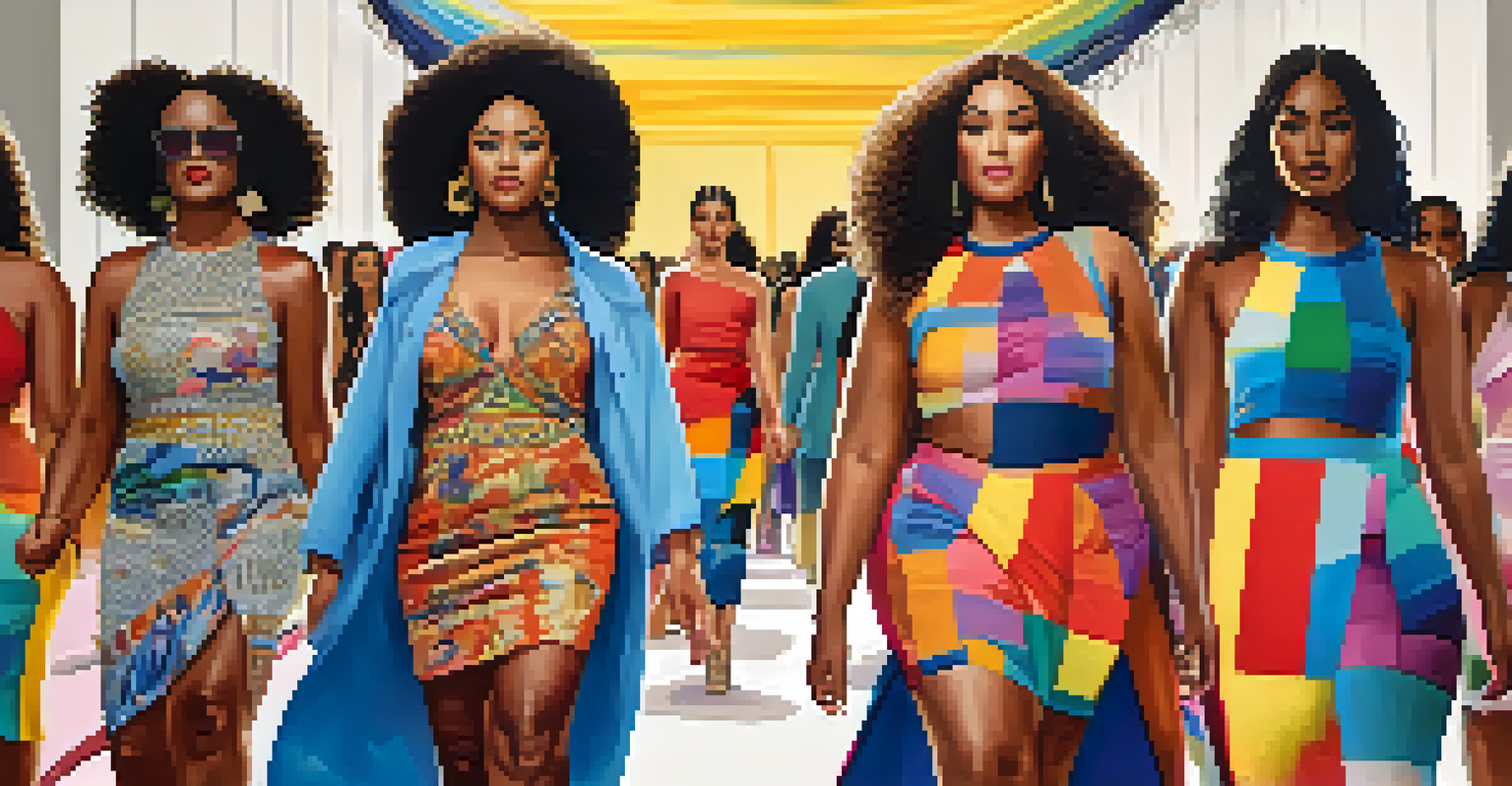The Role of Fashion in Feminist Movements Through History

The Early Days: Fashion and the Suffragette Movement
In the early 20th century, the suffragette movement was pivotal in advocating for women's rights, including the right to vote. Fashion played a crucial role as suffragettes used clothing as a form of protest. They often wore white dresses and sashes in the colors of the movement—purple, white, and green—to symbolize purity and loyalty.
Fashion is the armor to survive the reality of everyday life.
These outfits served not only as a uniform but also as a statement against the restrictive fashion norms of the time. By choosing to wear practical clothing, like bloomers, instead of corsets, suffragettes challenged societal expectations. This shift in fashion mirrored their desire for greater freedom and equality in society.
Moreover, the visibility of suffragette fashion helped garner public attention and support for their cause. It highlighted the connection between women's rights and personal expression through clothing, paving the way for future feminist movements to utilize fashion as a form of empowerment.
The Roaring Twenties: Liberation and Flapper Fashion
The 1920s marked a significant shift in women's fashion and societal roles, epitomized by the flapper style. Flappers embraced a more liberated lifestyle, characterized by shorter dresses, bobbed hair, and a carefree attitude. This new fashion not only represented a break from tradition but also symbolized women's newfound independence.

The flapper movement was closely tied to the feminist ideals of the time, as women sought to assert their rights in all aspects of life, including fashion. By rejecting the constrictive garments of the previous century, they embraced a style that allowed for greater movement and self-expression. This was a powerful statement against the patriarchal norms that dictated how women should dress.
Fashion as a Feminist Statement
Throughout history, fashion has been used by women to challenge societal norms and express their fight for equality.
As flapper fashion gained popularity, it also faced criticism from conservative factions. However, this only fueled the fire of the feminist movement, proving that clothing could be a powerful tool for social change and a means to challenge societal expectations.
1960s and 70s: Fashion as a Political Statement
The feminist movements of the 1960s and 70s saw fashion become a direct reflection of political ideologies. Women began to embrace styles that challenged traditional gender roles, such as pantsuits and miniskirts, symbolizing their fight for equality in the workplace and society. This era was marked by a surge in activism, and clothing became a canvas for expressing feminist beliefs.
I think that the beauty of fashion is that it's not just about clothes. It's about identity, it's about expression, and it's about the world we live in.
Notable figures like Gloria Steinem used fashion to convey a message, often wearing outfits that combined professionalism with femininity. The contrast highlighted the ongoing struggle for women to be taken seriously in male-dominated spaces. Fashion was no longer just about aesthetics; it was a vital part of the feminist dialogue.
Moreover, the rise of second-wave feminism brought attention to issues like body positivity and racial equality. Fashion designers began to create lines that celebrated diversity and inclusivity, further intertwining the worlds of feminism and fashion. This evolution showcased how clothing could be a medium for both personal and political expression.
The Impact of Punk Fashion on Feminism
The punk movement of the late 1970s and early 1980s introduced a rebellious aesthetic that resonated with feminist ideals. Punk fashion, characterized by leather jackets, ripped jeans, and bold hairstyles, challenged societal norms and embraced individuality. This movement provided a platform for women to express their dissent against traditional gender roles in a loud and unapologetic way.
Icons like Debbie Harry and Joan Jett used their punk style to challenge the male-dominated music scene, proving that women could be both fierce and fashionable. The punk ethos encouraged women to reclaim their bodies and their narratives, making a powerful statement about self-ownership. Fashion became an act of rebellion, allowing women to push back against patriarchal constraints.
Inclusivity in Modern Fashion
The 21st century has seen a shift towards body positivity and inclusivity, with fashion brands embracing diverse identities.
As punk culture evolved, it continued to inspire feminist movements, influencing styles that embraced empowerment and defiance. The DIY (do-it-yourself) approach of punk fashion allowed women to create their identities, fostering a sense of community and solidarity among feminists.
The 1990s: Grunge and Feminine Rebellion
The 1990s brought forth the grunge movement, which was characterized by its anti-establishment ethos and laid-back style. Women in the grunge scene embraced oversized flannel shirts, combat boots, and minimal makeup, rejecting the hyper-feminine styles of previous decades. This fashion choice was a bold statement of rebellion against societal expectations of beauty and femininity.
Artists like Kurt Cobain and Courtney Love became icons of this movement, with Love famously declaring that 'feminism is not a dirty word.' Grunge fashion represented a rejection of traditional gender roles and an embrace of authenticity. It allowed women to express themselves in a way that felt true to their experiences and identities.
Moreover, the grunge era coincided with the rise of third-wave feminism, which focused on individuality and diversity among women. The fashion of this time served as a reminder that feminism could take many forms, and personal expression through clothing was an integral part of that journey.
The 21st Century: Inclusivity and Body Positivity
As we moved into the 21st century, fashion began to embrace a more inclusive approach, reflecting the diverse identities within the feminist movement. Body positivity became a focal point, with campaigns promoting the idea that all bodies deserve to be celebrated. Fashion brands started featuring models of various sizes, ethnicities, and abilities, challenging the narrow standards of beauty that had dominated the industry.
This shift allowed women to see themselves represented in fashion, promoting self-acceptance and empowerment. Social media played a significant role in this transformation, as activists and influencers used platforms to highlight issues related to body image and inclusivity. The hashtag #BodyPositivity became a rallying cry, demonstrating the power of collective voices in the digital age.
Fashion and Social Justice Today
Contemporary fashion continues to intersect with activism, advocating for ethical practices and representing marginalized voices.
Moreover, contemporary designers are increasingly using their platforms to advocate for social justice, blending fashion with activism. This evolution signifies that fashion is no longer just about trends; it is a vital tool for promoting equality and challenging stereotypes within the feminist movement.
Fashion's Ongoing Role in Feminist Movements Today
Today, the role of fashion in feminist movements continues to evolve, reflecting the changing landscape of social justice. Many contemporary designers are committed to ethical practices, advocating for sustainability and fair labor, which aligns with feminist principles of equality and justice. This intersection of fashion and activism speaks to a broader understanding of feminism that encompasses environmentalism and workers' rights.
Moreover, fashion shows and campaigns increasingly feature diverse voices, ensuring that marginalized groups are represented. Initiatives like the 'Fashion for All' movement highlight the importance of inclusivity, reminding us that feminism is about uplifting all women, regardless of background. This shift challenges the industry to reconsider its standards and practices.

As we look to the future, fashion will undoubtedly continue to play a pivotal role in feminist movements. The ongoing dialogue about representation, sustainability, and social justice within the fashion industry speaks to the power of clothing as a medium for change. Fashion remains a vital expression of identity, solidarity, and resistance in the fight for equality.